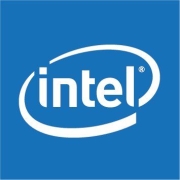Blade Servers consolidate multiple server functions into a slim, minimalist design. Optimized for performance and efficiency, these servers suit data centers seeking scalable solutions, allowing for better resource management.
Blade Servers integrate powerful processing capabilities in a compact chassis, providing a modular approach that enhances operational efficiency. These servers support extensive networking and storage options, facilitating seamless data flow and management. Designed for dynamic environments, they adapt to rapidly evolving demands by offering easy scalability and high density, ensuring reduced space utilization and energy consumption. The integration within existing infrastructure is smooth, offering hassle-free upgrades without substantial downtime.
What are the critical features of Blade Servers?
What benefits and ROI should be expected?
Industries such as finance, healthcare, and retail implement Blade Servers for their adaptability and performance enhancements. These servers facilitate high-volume transactions and real-time data processing, crucial for sectors relying on speed and accuracy.
This category provides a robust framework for efficient resource management and scalability, aligning with the growth objectives of organizations seeking streamlined IT operations.
| Product | Market Share (%) |
|---|---|
| HPE Synergy | 18.8% |
| Dell PowerEdge MX- Series | 14.7% |
| HPE BladeSystem | 13.7% |
| Other | 52.8% |





























Blade Servers enhance data center efficiency by maximizing space utilization and reducing energy consumption. You can achieve higher processing power density, meaning more servers in less space. This results in lower cooling requirements and consequently, reduced energy costs. Additionally, Blade Servers simplify cabling and make management easier through centralized control, leading to operational efficiencies.
What are the key considerations when choosing Blade Servers?When selecting Blade Servers, consider scalability, compatibility with existing infrastructure, and vendor support. Evaluate your current and future workload requirements to choose servers that can scale accordingly. Ensure they integrate with your existing systems and that you have access to reliable vendor support for maintenance and upgrades. Cost-effectiveness, including total cost of ownership, should also guide your decision.
How do Blade Servers differ from Rack Servers?Blade Servers differ from Rack Servers primarily in form factor and architecture. Blades are compact, fit into a chassis that provides shared power and cooling, and are designed for high-density deployment. Rack Servers are standalone units that include all necessary components, taking up more space but offering greater flexibility. Blade Servers are typically used when space optimization and energy efficiency are priorities, while Rack Servers provide more customization options.
Can Blade Servers support virtualization effectively?Blade Servers are well-suited for virtualization due to their high-density and efficient resource management. You can consolidate multiple virtual machines onto a single physical Blade, enhancing server utilization and minimizing physical server sprawl. Blade Servers often come with built-in tools that optimize virtualization environments, facilitating quick deployments, easy scaling, and simplified management of virtual workloads.
What are the typical use cases for Blade Servers?Blade Servers are ideal for environments requiring high-performance computing, such as data centers hosting cloud services, virtual desktop infrastructure, and enterprise resource planning applications. They are also used in environments where space and energy efficiency are critical due to their compact form and shared resources. Additionally, Blade Servers are favored in scalable applications where rapid deployment and configuration changes are frequently needed.